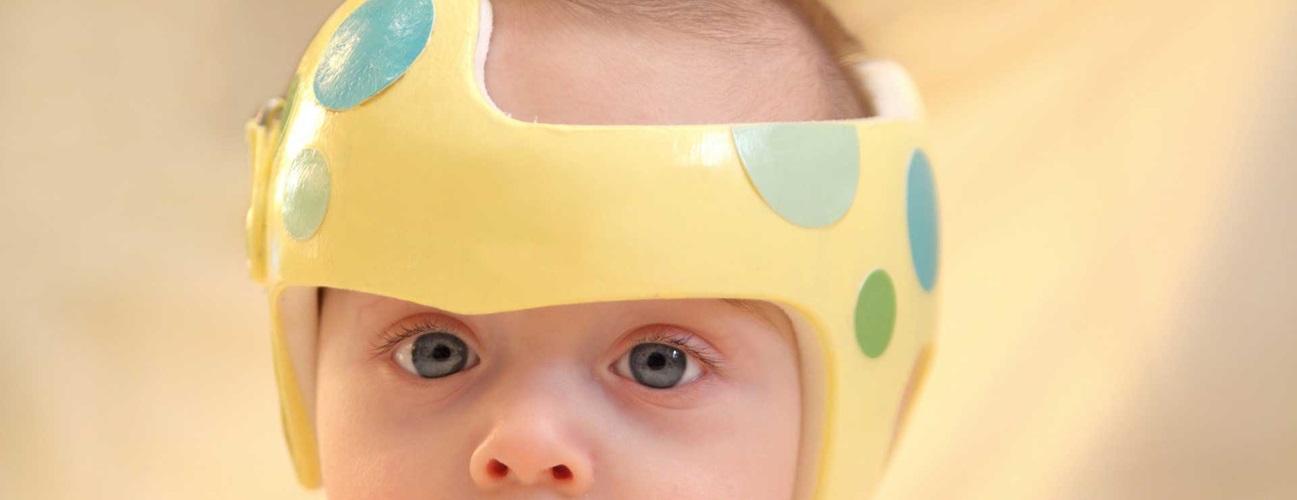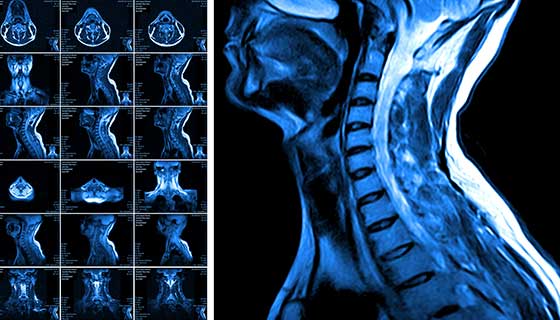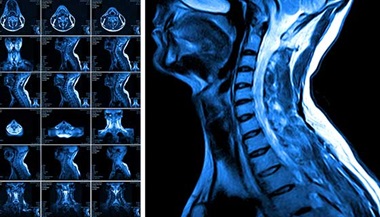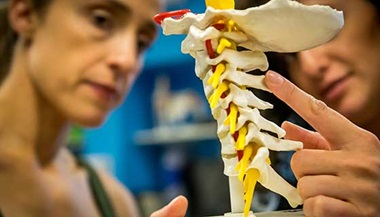Deformational Plagiocephaly
What is deformational plagiocephaly?
Deformational, or positional, plagiocephaly is when a baby develops a flat spot on one side of the head or the whole back of the head. It happens when a baby sleeps in the same position most of the time or because of problems with the neck muscles that result in a head-turning preference. Deformational plagiocephaly is also sometimes called “flat head syndrome.”
Deformational plagiocephaly is different from craniosynostosis. Craniosynostosis is when a baby’s skull bones fuse together before they are supposed to. In deformational plagiocephaly, there is no fusion of the skull bones.
What causes deformational plagiocephaly?
When a baby’s head stays in one position for long periods of time, the skull flattens. Sometimes a baby is born with this flattening because of a tight space in the uterus. This risk is often increased if there are twins or multiples. Other things that may lead to deformational plagiocephaly include:
-
Muscular torticollis. Muscular torticollis is a problem that is present at birth (congenital). One or more of the neck muscles is very tight. This tightness keeps the baby’s head in the same position.
-
Prematurity. The skull bones of premature babies are softer. And many premature babies spend a lot of time in the hospital on respirators with their heads in the same position.
-
Back sleeping. Babies who sleep on their backs or in car seats without changing positions for long periods of time can develop flat heads. However, the safest way for babies to sleep is on their back. This reduces the risk for sudden infant death syndrome (SIDS).
Who is at risk for deformational plagiocephaly?
Babies may be more likely to have this condition if they are:
-
A first-born child
-
Male
-
Born with the help of instruments. These include forceps and vacuum extraction.
What are the symptoms of deformational plagiocephaly?
This problem may not be noticeable or present at birth. It may develop during the first few months of life. A flat spot may appear on one side of the head or the whole back of the head as the baby grows.
How is deformational plagiocephaly diagnosed?
Your baby’s health care provider will check your baby’s head from all positions. He or she will feel your child’s head, particularly along the suture lines. The provider will also measure your baby’s head to figure out how serious the condition is.
How is deformational plagiocephaly treated?
Treatment will depend on your baby’s symptoms, age and general health. It will also depend on how severe the condition is. Treatment may include:
-
Changing your baby’s sleep position by turning the head to the opposite side (repositioning therapy)
-
Maximizing tummy time when your baby is awake and minimizing time in infant devices (such as bouncers, swings and car seats)
-
Receiving physical therapy to promote symmetric development of trunk and neck muscles
If the problem is moderate to severe and/or the plagiocephaly does not improve much by the time your baby has reached the age of 6 months, your baby’s health care provider may recommend a cranial orthotic helmet. Helmets usually have an outer hard shell and a foam lining. The helmets are custom made to direct your baby’s remaining head growth into the areas that need the most correction. Helmets are very effective for positional plagiocephaly when fitted and worn properly. The duration of treatment will depend on the severity of the flattening and the age at the start of treatment and will be monitored by an orthotist. Helmets must be prescribed by a health care provider who has experience with this treatment.
What are the complications of deformational plagiocephaly?
As babies grow and develop, they will move and reposition themselves. This removes the pressure that may have caused the condition. But if the flat spot is moderate to severe, it may not get better on its own. If treatment is not started early enough, your child’s head may continue to be uneven.
Can deformational plagiocephaly be prevented?
This condition has increased since the “Back to Sleep” campaign, which was started to decrease deaths from SIDS and has been very successful. It is important that young babies not be placed on their belly to sleep. This is because they cannot roll over and move themselves. These tips can help prevent a flat head:
-
Let your baby have tummy time while he or she is awake and you are watching.
-
Lessen the time your baby spends in bouncers, swings and car seats.
-
Hold your baby, giving him or her time to be upright.
When should I call my child’s health care provider?
If you notice that your baby’s head is misshapen, or you are worried about a flat spot, have your baby checked by his or her health care provider.
Key Points About Deformational Plagiocephaly
-
Deformational plagiocephaly is when a baby develops a lasting flat spot on one side of the head or the back of the head.
-
The first steps in treating deformational plagiocephaly are changing your baby’s head position (repositioning), maximizing tummy time and minimizing time in infant devices.
-
Some babies may need to wear a cranial orthotic helmet.
-
Many cases will improve with conservative treatment alone, provided attention is directed early to the problem.
Next Steps
Tips to help you get the most from a visit to your child’s health care provider:
-
Before your visit, write down questions you want answered.
-
At the visit, write down the name of a new diagnosis and any new medicines, treatments or tests. Also write down any new instructions your provider gives you for your child.
-
Know why a new medicine or treatment is prescribed and how it will help your child. Also know what the side effects are.
-
Ask if your child’s condition can be treated in other ways.
-
Know why a test or procedure is recommended and what the results could mean.
-
Know what to expect if your child does not take the medicine or have the test or procedure.
-
If your child has a follow-up appointment, write down the date, time and purpose for that visit.
-
Know how you can contact your child’s provider after office hours. This is important if your child becomes ill and you have questions or need advice.






